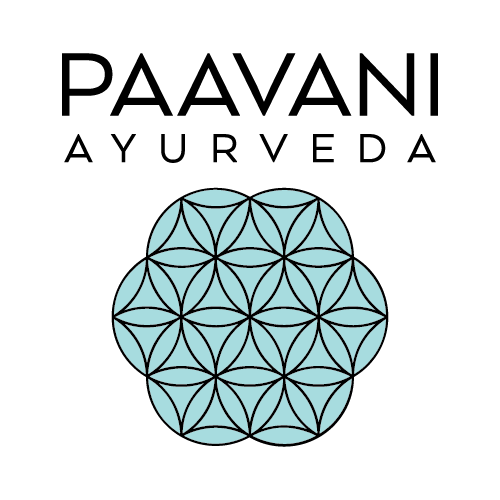
The 3 Subtle Doshas: Prana, Tejas & Ojas
We have all heard the expression “mind, body and soul”. A conceptualization that allows us to understand ourselves as an interconnected, complex body rather than seeing these three aspects of ourselves as separate and unrelated. This perspective considers that when one aspect of our being is out of balance, it undoubtedly affects the others. Ayurveda, India’s traditional medical system, has been illuminating this exact concept for over 5,000 years, but with slightly different terms. Ayurveda teaches that there are 3 bodies within an individual- the physical body, the subtle body and the causal body.
The Physical Body
The physical body is what we generally think of as “the body” and is the grossest or densest of the 3 bodies. Essentially, it is the body that we use to experience the physical world. Our five sense organs (the eyes, ears, nose, tongue and skin) and organs of action (the mouth, feet, hands, anus and genitals) are contained within the physical body. For the physical body to survive, we need to nourish it with food and water. When we consume food and water, we take in the 5 elements (ether, air, fire, water and earth) and from these elements, the 3 doshas (vata, pitta and kapha) emerge. Within the physical body, vata dosha assists movement, pitta dosha is in charge of digestion, metabolism and energy production and kapha dosha provides both structure (bones and tissues) and our bodily fluids.
The Subtle Body
The subtle body is the bridge between the physical and causal bodies and is a combination of the mind, intellect and ego. It cannot be seen in the physical world; however, in Ayurveda, it is considered the energetic blueprint of the physical body. For example, when the breath (prana) circulates through the respiratory system of the physical body, the prana (life force energy) is circulated through channels called the nadis in the subtle body. Hence, while processes are happening in the physical body, subtle energies also result from these processes in the subtle body. While vata, pitta and kapha are the physiological forces that govern the physical body, the subtle body consists of the doshas' more refined, subtle essences: prana, tejas and ojas.
The Causal Body
The causal body is what connects us with our universal spirit and human soul. It is the non-physical aspect of one's being. Further, it carries a record of our past, present and future experiences. For one to aspire to their highest potential, they must nurture a healthy relationship with their causal body.
In this blog, we will share more about the 3 subtle doshas- prana, tejas and ojas and how we can support these energies of our subtle body to create greater balance and alignment in our mind, body and soul.
Prana
Prana is commonly referred to as breath in the physical body or life force energy in the subtle body. It is the subtle essence of vata dosha; therefore, it is the most connected to the air and ether elements. Prana is what flows through the nadis (channels) within the subtle body and it is what motivates life. It is the animating force that connects us to our life experiences as well as pure consciousness.
Healthy expressions of prana include feelings of joy, enthusiasm and excitement. It delivers ease of breath, adaptability, vitality and creativity. Ayurveda explains that self-care rituals such as practicing daily pranayama (breathing exercises), neti and nasya, mindful movements like yoga and tai chi and eating organic, fresh foods aligned with one’s dosha can elevate and support healthy prana.
Tejas
Tejas is the subtle form of pitta dosha; therefore, it is most connected with the fire element. Like fire, tejas is the power that brings us light or inner radiance and is the fuel of transformation (metabolism, digestion, sight, intelligence and perception). From this inner radiance of the subtle body, warmth is felt in the physical body and can be seen through a luster in the eyes and glow of the skin.
Balanced tejas can be seen through discernment, clarity and the ability to learn, adapt, and progress in one’s life. Further, it is associated with one’s willpower and sharpness of intellect. Daily practices such as awakening the agni (digestive fire) with dosha specific herbs, trataka (candle gazing meditation), garshana and activating yoga asana can help build healthy tejas.
Ojas
Ojas is the subtle form of kapha dosha; therefore, it is most connected with the earth and water elements. Like the structural aspects of earth, ojas is the container that holds the life force energy of prana and the luminous energy of tejas. Like the healing aspects of water, ojas is connected to nourishment and vitality and the physical and emotional bodies’ ability to withstand stress.
When ojas is in a healthy state, an individual contains fortitude, endurance and empathy. In the physical body, the voice is clear, the immune system is strong and there is an overall bliss and satisfaction with one’s being. Time in nature, quality sleep, nourishing foods and other self-care routines like abhyanga and consumption of Ghee, Golden Milk, Ashwagandha and/or Shatavari can support the health and vigor of ojas.
Tap into Your 3 Subtle Doshas
We hope this introduction to the subtle doshas awakens your desire to connect more deeply with your subtle body and the various aspects of your being. Remember how with each breath you are not just taking in oxygen to feed your cells, but you are also drawing in life force energy (prana) to sustain your mental/emotional well-being and connection with the divine. As you eat to sustain your physical body, you also awaken the potential for transformation, luminescence and confidence (tejas) in your subtle body. Through nourishing your physical body with self-care rituals, you are also building your vitality (ojas) and a greater connection to spirit and ability to awaken to your highest potential.
To learn more about prana, tejas and ojas and Ayurvedic philosophy, please visit our online bookstore. For an even deeper dive, we invite you to become a student in Sacred Path Yoga’s Ayurvedic Yoga Teacher Training. This online course is taught by our Clinical Ayurvedic Specialist, Laurel Odom, and our co-founder, Trudy Collings.





Leave a comment
This site is protected by hCaptcha and the hCaptcha Privacy Policy and Terms of Service apply.